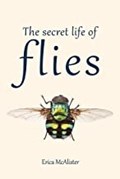Narrow Results By
- Byron Harmon (Banff, Alberta) 4188
- Bruno Engler 2549
- Gadd, Ben 232
- Alpine Club of Canada 217
- [Edmee Moore created the album] 179
- Elliott Barnes 140
- Boorne & May Photographers (Calgary, NWT) 104
- [Molly Wright Adams created the album] 100
- [Mary Schaffer] 95
- Lewis Freeman (United States) 88
- [Byron Harmon] 66
- Charles Macmunn (Victoria, BC) 48
The domination of nature
https://archives.whyte.org/en/permalink/catalogue25698
- Medium
- Library - Book (including soft-cover and pamphlets)
- Published Date
- 2023
- Author
- Leiss, William
- Publisher
- Montreal ; Kingston ; London ; Chicago : McGill-Queen’s University Press
- Call Number
- 04 L53t
- Author
- Leiss, William
- Publisher
- Montreal ; Kingston ; London ; Chicago : McGill-Queen’s University Press
- Published Date
- 2023
- Physical Description
- 306 pages ; 23 cm.
- Subjects
- Environment
- Philosophy
- Science
- Technology
- Nature
- Abstract
- Concern over ecological and environmental problems grows daily, and many believe we’re at a critical tipping point. Scientists, social thinkers, public officials, and the public recognize that failure to understand the destructive impact of industrial society and advanced technologies on the delicate balance of organic life in the global ecosystem will result in devastating problems for future generations. In The Domination of Nature William Leiss argues that this global predicament must be understood in terms of deeply rooted attitudes towards nature. He traces the origins, development, and social consequences of an idea whose imprint is everywhere in modern thought: the idea of the domination of nature. In Part One Leiss traces the idea of the domination of nature from the Renaissance to the nineteenth century. Francis Bacon’s seminal work provides the pivotal point for this discussion, and through an original interpretation of Bacon’s thought, Leiss shows how momentous ambiguities in the idea were incorporated into modern thought. By the beginning of the twentieth century the concept had become firmly identified with scientific and technological progress. This fact defines the task of Part Two. Using important contributions by European sociologists and philosophers, Leiss critically analyzes the role of science and technology in the modern world. In the concluding chapter he puts the idea of mastery over nature into historical perspective and explores a new approach, based on the possibilities of the liberation of nature. Originally published in 1972, The Domination of Nature was part of the first wave of widespread interest in environmental issues. In a new preface Leiss explores the concept of eco-dominion and the moral obligations of human citizens of the twenty-first century.-- Provided by publisher.
- Contents
- The Cunning of Unreason -- Mythical, Religious, and Philosophical Roots -- Francis Bacon -- The Seventeenth Century and After -- Science and Domination -- Science and Nature -- Technology and Domination -- The Liberation of Nature?
- ISBN
- 9780228017257
- Accession Number
- P2023.08
- Call Number
- 04 L53t
- Collection
- Archives Library
This material is presented as originally created; it may contain outdated cultural descriptions and
potentially offensive content.
Read more.
Organizing nature : turning Canada's ecosystems into resources
https://archives.whyte.org/en/permalink/catalogue26201
- Medium
- Library - Book (including soft-cover and pamphlets)
- Published Date
- 2023
- Author
- Biro, Andrew and Cohen, Alice
- Publisher
- Toronto ; Buffalo ; London : University of Toronto Press
- Call Number
- 04 B53o
- Publisher
- Toronto ; Buffalo ; London : University of Toronto Press
- Published Date
- 2023
- Physical Description
- xviii, 264 pages : illustrations, maps ; 24 cm
- Abstract
- Organizing Nature explores how the environment is organized in Canada's resource-dependent economy. The book examines how particular ecosystem components come to be understood as natural resources and how these resources in turn are used to organize life in Canada. In tracing transitions from "ecosystem component" to "resource," this book weaves together the roles that commodification, Indigenous dispossession, and especially a false nature-society binary play in facilitating the conceptual and material construction of resources. Alice Cohen and Andrew Biro present an alternative to this false nature-society binary: one that sees Canadians and their environments in a constant process of making and remaking each other. Through a series of case studies focused on specific resources--fish, forests, carbon, water, land, and life--the book explores six channels through which this remaking occurs: governments, communities, built environments, culture and ideas, economies, and bodies and identities. Ultimately, Organizing Nature encourages readers to think critically about what is at stake when Canadians (re)produce myths about the false separation between Canadian peoples and their environments."-- Provided by publisher.
- Contents
- 1. Introduction -- 1.1 From How to Why -- 1.2 From Ecosystem Components to Resources -- 1.3 Politics beyond Policy -- 1.4 Resourcification through Six Channels -- 1.5 Book Outline and Common Themes -- 2. Channels: From Ecosystem Components to Resources -- 2.1 Introduction -- 2.2 Governments -- 2.3 Communities -- 2.4 Built Environments -- 2.5 Culture and Ideas -- 2.6 Economies -- 2.7 Bodies and Identities -- 2.8 Summary and Conclusions -- 3. From Fish to Fisheries -- 3.1 Introduction -- 3.2 Salmon in British Columbia -- 3.3 Cod in Newfoundland and Labrador -- 3.4 Channels in Action: Organizing Fisheries -- 3.5 Summary and Conclusions -- 4. From Forests to Timber -- 4.1 Introduction -- 4.2 Growth of Timber: Saint John, New Brunswick -- 4.3 Trees, Not Timber: Port Renfrew, British Columbia, and Darkwoods -- 4.4 Channels in Action: Organizing Forests -- 4.5 Summary and Conclusions -- 5. From Carbon to Energy -- 5.1 Introduction -- 5.2 Coal in Nova Scotia -- 5.3 Oil and Bitumen in Alberta -- 5.4 Natural Gas and Fracking -- 5.5 Channels in Action: Organizing Carbon -- 5.6 Summary and Conclusions -- 6. From H2O to Water -- 6.1 Introduction -- 6.2 Diversions and Damming -- 6.2.1 Diversion -- 6.2.2 Damming -- 6.3 Drinking Water -- 6.3.1 Vancouver, 2006 -- 6.3.2 Walkerton, Ontario, 2000 -- 6.3.3 Asubpeechoseewagong Netum Anishinabek-Grassy Narrows, Ontario, 1962-? -- 6.3.4 Drinking Water: Summary -- 6.4 Channels in Action: Organizing Water -- 6.5 Summary and Conclusions -- 7. From Land to Property -- 7.1 Introduction -- 7.2 Soil -- 7.3 Symbol -- 7.4 Space -- 7.5 Channels in Action: Organizing Land -- 7.6 Summary and Conclusions -- 8. From Bodies to Life -- 8.1 Introduction -- 8.2 Wild(?)life: Non-Human Animals -- 8.2.1 Pets and Other Companion Species -- 8.2.2 Fish and Game: Wildness as Economic Resource -- 8.2.3 Parks as Spaces for Wildlife -- 8.3 Human Resources -- 8.3.1 Blood and Plasma -- 8.3.2 Surrogacy -- 8.4 The Channels in Action: Organizing Life -- 8.5 Summary and Conclusions -- 9. Resources: Organized and Organizers -- 9.1 Channels in Action -- 9.2 Common Themes -- 9.2.1 Commodification -- 9.2.2 Indigenous Dispossession -- 9.2.3 Artificial Nature-Society Binary -- 9.3 Why Does 'Resource Thinking' Matter? -- 9.3.1 Winning and Losing -- 9.3.2 Why Is It Important to Think beyond Policy?
- ISBN
- 9781487594848
- Accession Number
- P2023.22
- Call Number
- 04 B53o
- Collection
- Archives Library
This material is presented as originally created; it may contain outdated cultural descriptions and
potentially offensive content.
Read more.
Blood memory : the tragic decline and improbable resurrection of the American Buffalo
https://archives.whyte.org/en/permalink/catalogue26204
- Medium
- Library - Book (including soft-cover and pamphlets)
- Published Date
- 2023
- Author
- Duncan, Dayton and Burns, Ken
- Publisher
- New York : Alfred A. Knopf
- Call Number
- 08 D91b
- Publisher
- New York : Alfred A. Knopf
- Published Date
- 2023
- Physical Description
- xvi, 329 pages : illustrations (chiefly color) ; 24 cm
- Subjects
- Buffalo
- Pablo-Allard buffalo round-up
- Conservation
- Indigenous
- Colonialism
- Environment
- Ecology
- Abstract
- The epic story of the buffalo in America, from prehistoric times to today--a moving and beautifully illustrated work of natural history. The American buffalo--our nation's official mammal-is an improbable, shaggy beast that has found itself at the center of many of our most mythic and sometimes heartbreaking tales. The largest land animals in the Western Hemisphere, they are survivors of a mass extinction that erased ancient species that were even larger. For nearly 10,000 years, they evolved alongside Native people who weaved them into every aspect of daily life; relied on them for food, clothing, and shelter; and revered them as equals. Newcomers to the continent found the buffalo fascinating at first, but in time they came to consider them a hindrance to a young nation's expansion. And in the space of only a decade they were slaughtered by the millions for their hides, with their carcasses left to rot on the prairies. Then, teetering on the brink of disappearing from the face of the earth, they would be rescued by a motley collection of Americans, each of them driven by different--and sometimes competing--impulses. This is the rich and complicated story of a young republic's heedless rush to conquer a continent, but also of the dawn of the conservation era--a story of America at its very best and worst -- Provided by publisher.
- Contents
- Part 1: The Trail to Extinction -- The Buffalo and the People -- Strangers -- Omen in the Skies -- The Iron Horse -- Kills Tomorrow -- Part 2: Back From the Brink -- A Death Wind for My People -- Just in the Nick of Time -- Changes of Heart -- Ghosts -- The Last Refuge -- Blood Memory -- Big Medicine.
- Notes
- Dayton Duncan ; based on a documentary film by Ken Burns ; written by Dayton Duncan ; with an introduction by Ken Burns ; picture research by Emily Mosher and Susan Shumaker ; design by Maggie Hinders.
- Whyte Museum archival collections utilized.
- ISBN
- 9780593537343
- Accession Number
- P2023.25
- Call Number
- 08 D91b
- Collection
- Archives Library
This material is presented as originally created; it may contain outdated cultural descriptions and
potentially offensive content.
Read more.
Rare air : endangered birds, bats, butterflies, & bees
https://archives.whyte.org/en/permalink/catalogue26220
- Medium
- Library - Book (including soft-cover and pamphlets)
- Published Date
- 2023
- Author
- Kaizar, Sarah and Meiser, A. Scott
- Publisher
- Seattle, Washington : Skipstone
- Call Number
- 04.2 K12r
- Publisher
- Seattle, Washington : Skipstone
- Published Date
- 2023
- Physical Description
- 149 pages : color illustrations ; 23 cm
- Subjects
- Zoology
- Birds
- Insects
- Ecology
- Environment
- Abstract
- Rare Air, the culmination of artist Sarah Kaizar's dedication to illustrating endangered fauna, features 66 endangered species of flight--33 birds, 5 bats, 12 bees, and 16 butterflies--presented in her scientifically accurate and utterly engaging pen-and-ink style. Complementing the art are informative and story-driven natural histories of each species by writer A. Scott Meiser, as well as interviews with biologists who are working to sustain some of the same species. An introduction highlights how Kaizar developed this project, while the "How to Get Involved" appendix provides helpful tips on actions readers can take to help these creatures. Kaizar's work informs readers about the world around them in a way that is beautiful and engaging, while also examining the environmental conditions that put these species at risk. Rare Air broadens the conversation about environmental study and inspires readers across the country to care for our winged creatures. -- Provided by publisher.
- Contents
- Introduction : conservation on the wing -- Rare air species. Field feature : bird data : counts, migrations, trends -- Field feature : indigenous resource managements -- Field feature : bat conservation international -- Field feature : nurdle patrol -- Acknowledgments -- References -- How to get involved -- Species index.
- ISBN
- 9781680515510
- Accession Number
- P2024.01
- Call Number
- 04.2 K12r
- Collection
- Archives Library
This material is presented as originally created; it may contain outdated cultural descriptions and
potentially offensive content.
Read more.
The Canadian mountain assessment : walking together to enhance the understanding of mountains in Canada
https://archives.whyte.org/en/permalink/catalogue26222
- Medium
- Library - Book (including soft-cover and pamphlets)
- Published Date
- 2023
- Publisher
- Calgary, AB : University of Calgary Press
- Edition
- 2023
- Call Number
- 04 M14c
- Responsibility
- Graham McDowell (Project Lead), Madison Stevens, Shawn Marshall [and 70 others]
- Edition
- 2023
- Publisher
- Calgary, AB : University of Calgary Press
- Published Date
- 2023
- Physical Description
- xvii, 355 pages : illustrations (chiefly colour), color maps ; 28 cm
- Subjects
- Mountains
- Ecology
- Science
- Indigenous People
- Environment
- Abstract
- The Canadian Mountain Assessment provides a first-of-its-kind look at what we know, do not know, and need to know about mountain systems in Canada. The assessment is based on insights from First Nations, Métis, and Inuit knowledges of mountains, as well as findings from an extensive assessment of pertinent academic literature. Its inclusive knowledge co-creation approach brings these multiple forms of evidence together in ways that enhance our collective understanding of mountains in Canada, while also respecting and maintaining the integrity of different knowledge systems. The Canadian Mountain Assessment is a text-based document, but also includes a variety of visual materials as well as access to video recordings of oral knowledges shared by Indigenous individuals from mountain areas in Canada. The assessment is the result of over three years of work, during which time the initiative played an important role in connecting and cultivating relationships between mountain knowledge holders from across Canada. -- Provided by publisher.
- Contents
- 1. Introduction -- 2. Mountain environments -- 3. Mountains as homelands -- 4. Gifts of the mountains -- 5. Mountains under pressure -- 6. Desirable mountain futures.
- Notes
- Staff member Dawn Saunders Dahl contributed to this publication.
- 2022-2023 Lillian Agnes Jones Scholarship Recipient, Kate Hanly contributed to this publication.
- Publication utilized Whyte Museum Archives and Special Collections materials.
- ISBN
- 9781773855097
- Accession Number
- P2024.01
- Call Number
- 04 M14c
- Collection
- Archives Library
This material is presented as originally created; it may contain outdated cultural descriptions and
potentially offensive content.
Read more.
Transformative politics of nature : overcoming barriers to conservation in Canada
https://archives.whyte.org/en/permalink/catalogue26252
- Medium
- Library - Book (including soft-cover and pamphlets)
- Published Date
- 2023
- Publisher
- Toronto ; Buffalo ; London : University of Toronto Press
- Call Number
- 04 Ol4t
- Responsibility
- Edited by Andrea Olive, Chance Finegan, and Karen F. Beazley
- Publisher
- Toronto ; Buffalo ; London : University of Toronto Press
- Published Date
- 2023
- Physical Description
- x, 310 pages : illustrations (black and white), map ; 23 cm
- Subjects
- Environment
- Environmentalism
- Conservation
- Politics
- Indigenous
- Indigenous Peoples
- Law
- Canada
- Abstract
- Transformative Politics of Nature highlights the most significant barriers to conservation in Canada and discusses strategies to confront and overcome them. Featuring contributions from academics as well as practitioners, the volume brings together the perspectives of both Indigenous and non-Indigenous experts on land and wildlife conservation, in a way that honours and respects all peoples and nature. Contributors provide insights that enhance understanding of key barriers, important actors, and strategies for shaping policy at multiple levels of government across Canada. The chapters engage academics, environmental conservation organizations, and Indigenous communities in dialogues and explorations of the politics of wildlife conservation. They address broad and interrelated themes, organized into three parts: barriers to conservation, transformation through reconciliation, and transformation through policy and governance. Together, they demonstrate and highlight the need for increased social-political awareness of biodiversity and conservation in Canada, enhanced wildlife conservation collaborative networks, and increased scholarly attention to the principle, policies, and practices of maintaining and restoring nature for the benefit of all peoples, other species, and ecologies. Transformative Politics of Nature presents a vision of profound change in the way humans relate to each other and with the natural world. -- Provided by publisher.
- Contents
- OPENING CEREMONY -- Beginning / Shalan Joudry -- PART A: INTRODUCTION -- 1. From politics to transformative politics in Canada / Karen F. Beazley, Andrea Olive, and Chance Finegan -- INTRODUCING DISRUPTIONS / Chance Finegan -- PART B: BARRIERS TO CONSERVATION IN CANADA -- 2. A pathological examination of conservation failure in Canada / Christopher J. Lemieux, Mark W. Groulx, Trevor Swerdfager, and Shannon Hagerman -- 3. Who should govern wildlife? Examining attitudes across the country / Matthew A. Williamson, Stacy Lischka, Andrea Olive, Jeremy Pitman, and Adam T. Ford -- 4. In a rut: barriers to caribou recovery / Julee Boan and Rachel Plotkin -- 5. Enacting a reciprocal ethic of care: (finally) fulfilling treaty obligations / Larry McDermott and Robin Roth -- DISRUPTIONS, PART B -- Disrupting dominant narratives for a mainstream conservation issue: a case study on "saving the bees" / Sheila R. Colla -- The national parks in disrupting heritage interpretation on Turtle Island / Chance Finegan -- PART C: TRANSFORMATION THROUGH VALUES -- 6. Reconciliation or Apiksitaultimik? indigenous relationality for conservation / Sherry Pictou -- 7. "etuaptmumk / two-eyed seeing and reconciliation with Earth" / Deborah McGregor, Jesse Popp, Andrea Reid, Elder Albert Marshall, Jacquelyn Miller, and Mahisha Sritharan -- 8. Beacons of teachings / Lisa Young -- DISRUPTIONS, PART C -- Indigenous knowledge as a disruption to state-led conservation / Natasha Myhal -- The Misipawistik Cree Nation kanawenihcikew guardians program / Heidi Cook -- PART D: TRANSFORMATION THROUGH ACTION -- 9. Transforming university cirriculum and student experiences through collaboration and land-based learning / Melanie Zurba, James Doucette, and Bridget Graham -- 10. Ecological networks and corridors in the context of global initiatives / Jodi A. Hilty and Stephen Woodley -- 11. The imperative for transformative change to address biodiversity loss in Canada / Justina C. Ray -- DISRUPTIONS, PART D. -- Conservation bright spots: focusing on solutions instead reacting to problems / Barbara Frei -- Disrupting current approaches to biodiversity conservation through innovative knowledge mobilization / Vivian Nguyen -- PART E: CONCLUSION -- 12. Achieving transformative change: conservation in Canada, 2023 and beyond / Andrea Olive and Karen F. Beazley -- CLOSING CEREMONY -- Onward / Shalan Joudry
- ISBN
- 9781487550516
- Accession Number
- P2024.02
- Call Number
- 04 Ol4t
- Collection
- Archives Library
This material is presented as originally created; it may contain outdated cultural descriptions and
potentially offensive content.
Read more.
Capturing glaciers : a history of repeat photography and global warming
https://archives.whyte.org/en/permalink/catalogue26254
- Medium
- Library - Book (including soft-cover and pamphlets)
- Published Date
- 2023
- Author
- Inkpen, Dani
- Publisher
- Seattle : University of Washington Press
- Call Number
- 04 In5c
- Author
- Inkpen, Dani
- Publisher
- Seattle : University of Washington Press
- Published Date
- 2023
- Physical Description
- In Capturing Glaciers, Dani Inkpen examines the many ways scientists have made and used photographs of receding glaciers and how the meanings and evidential value of such images evolved over time. This project sheds light on the challenges of conducting research about climate change, the challenges of enacting social change around environmental problems, and the ways that well-intentioned scientists can still replicate social inequalities"-- Provided by publisher.
- Subjects
- Glaciers
- glaciology
- Global warming
- Climate change
- Photography
- Repeat photography
- Environment
- Nature
- Abstract
- In Capturing Glaciers, Dani Inkpen examines the many ways scientists have made and used photographs of receding glaciers and how the meanings and evidential value of such images evolved over time. This project sheds light on the challenges of conducting research about climate change, the challenges of enacting social change around environmental problems, and the ways that well-intentioned scientists can still replicate social inequalities. -- Provided by publisher.
- Contents
- Introduction : thinking historically about photos of ice -- Documenting : glacier naturalism -- Transitions : the limits of photography -- Measuring : geophysical glaciology -- Monitoring : environmental glaciology -- Witnessing : the iconography of ice -- Conclusion : people and glaciers.
- Notes
- Whyte Museum collections utilized for research purposes and imagery.
- ISBN
- 9780295752020
- Accession Number
- 2024.27
- Call Number
- 04 In5c
- Collection
- Archives Library
This material is presented as originally created; it may contain outdated cultural descriptions and
potentially offensive content.
Read more.
The wind and the sky and everything else
https://archives.whyte.org/en/permalink/catalogue26199
- Medium
- Library - Book (including soft-cover and pamphlets)
- Published Date
- 2022
- Author
- Klevgaard, Annette
- Publisher
- Edmonton, Alberta : Annette Klevgaard
- Call Number
- 05.1 K67a
- Author
- Klevgaard, Annette
- Publisher
- Edmonton, Alberta : Annette Klevgaard
- Published Date
- 2022
- Physical Description
- 121 pages
- Subjects
- Poetry
- Canadian Rockies
- Nature
- Environment
- Abstract
- Coloured by the magnificience of the Western Canadian landscape, The Wind and The Sky and everything else is a stark exploration of our connection and disconnection to the Earth, ourselves, and each other. -- From Backcover
- ISBN
- 9781778135309
- Accession Number
- P2023.23
- Call Number
- 05.1 K67a
- Collection
- Archives Library
This material is presented as originally created; it may contain outdated cultural descriptions and
potentially offensive content.
Read more.
The secret life of flies
https://archives.whyte.org/en/permalink/catalogue26215
- Medium
- Library - Book (including soft-cover and pamphlets)
- Published Date
- 2022
- Author
- McAlister, Erica
- Publisher
- Buffalo, New York : Firefly Books
- Call Number
- 04.2 M11t
- Author
- McAlister, Erica
- Publisher
- Buffalo, New York : Firefly Books
- Published Date
- 2022
- Physical Description
- 248 pages : illustrations ; 20 cm
- Subjects
- Insects
- Flies
- Entomology
- Zoology
- Environment
- Abstract
- The Secret Life of Flies takes readers into the hidden world of snail killers, con artists, crazy sex and a great many silly names. It dispels common misconceptions about flies and reveals how truly extraordinary, exotic and important are these misunderstood creatures. In clear language, McAlister explains Diptera taxonomy and forensic entomology, and describes the potential of flies to transform their relationship with humans from one of disease vector to partner in environmental preservation. She has a wonderful knack for storytelling, deftly transforming what could be dry descriptions of biology, reproduction and morphology into entertainment. She takes readers to piles of poo in Ethiopia by way of underground caves, latrines and backyard gardens, and opens the drawers at the Natural History Museum to rhapsodize over her favorite flies. -- Provided by publisher.
- Contents
- Introduction -- The immature ones -- The pollinators -- The detritivores -- The coprophages -- The necrophages -- The vegetarians -- The fungivores -- The predators -- The parasites -- The sanguivores -- The end -- Further reading -- Index -- Picture credits -- Acknowledgements
- Notes
- Previously published: Richmond Hill, Ontario; Buffalo, New York: Firefly Books Ltd., 2017.
- ISBN
- 9780228103929
- Accession Number
- P2024.01
- Call Number
- 04.2 M11t
- Collection
- Archives Library
This material is presented as originally created; it may contain outdated cultural descriptions and
potentially offensive content.
Read more.
Dark days at noon : the future of fire
https://archives.whyte.org/en/permalink/catalogue26239
- Medium
- Library - Book (including soft-cover and pamphlets)
- Published Date
- 2022
- Author
- Struzik, Edward
- Publisher
- Montreal ; Kingston ; London ; Chicago : McGill-Queen's University Press
- Call Number
- 04 St8d
- Author
- Struzik, Edward
- Publisher
- Montreal ; Kingston ; London ; Chicago : McGill-Queen's University Press
- Published Date
- 2022
- Physical Description
- ix, 291 pages : illustrations (chiefly colour), colour map ; 27 cm
- Abstract
- The catastrophic runaway wildfires advancing through North America and other parts of the world are not unprecedented. Fires loomed large once human activity began to warm the climate in the 1820s, leading to an aggressive firefighting strategy that has left many of the continent's forests too old and vulnerable to the fires that many tree species need to regenerate. Dark Days at Noon provides a broad history of wildfire in North America, from pre-European contact to the present, in the hopes that we may learn from how we managed fire in the past, and apply those lessons in the future. As people continue to move into forested landscapes to work, play, live, and ignite fires--intentionally or unintentionally--fire has begun to take its toll, burning entire towns, knocking out utilities, closing roads, and forcing the evacuation of hundreds of thousands of people. Fire management in North America requires attention and cooperation from both sides of the border, and many of the most significant fires have taken place at the boundary line. Despite a clear lack of political urgency among political leaders, Edward Struzik argues that wildfire science needs to guide the future of fire management, and that those same leaders need to shape public perception accordingly. By explaining how society's misguided response to fire has led to our current situation, Dark Days at Noon warns of what may happen in the future if we do not learn to live with fire as the continent's Indigenous Peoples once did. -- Provided by publisher.
- Contents
- Introduction -- 1. Prelude to the dark days at noon -- 2. The fire triangle -- 3. More dark days coming -- 4. The big burn -- 5. Big burns in Canada -- 6. Paiute forestry -- 7. Fire suppression -- 8. The Civilian Conservation Corps -- 9. Canada's Conservation Corps -- 10. The fall of the Dominion Forest Service -- 11. The royal commission into wildfire -- 12. White man's fire -- 13. International co-operation -- 14. Blue moon and blue sun -- 15. Nuclear winter -- 16. Yellowstone: A turning point -- 17. Big and small grizzlies -- 18. Climate and the age of megafire -- 19. The holy shit fire -- 20. The Pyrocene -- 21. Nuclear winter: Part two -- 22. Owls and clear-cuts -- 23. Water on fire -- 24. The Arctic on fire -- 25. The big smoke -- 26. Fire news -- Conclusion.
- ISBN
- 9780228012092
- Accession Number
- P2024.02
- Call Number
- 04 St8d
- Collection
- Archives Library
This material is presented as originally created; it may contain outdated cultural descriptions and
potentially offensive content.
Read more.










